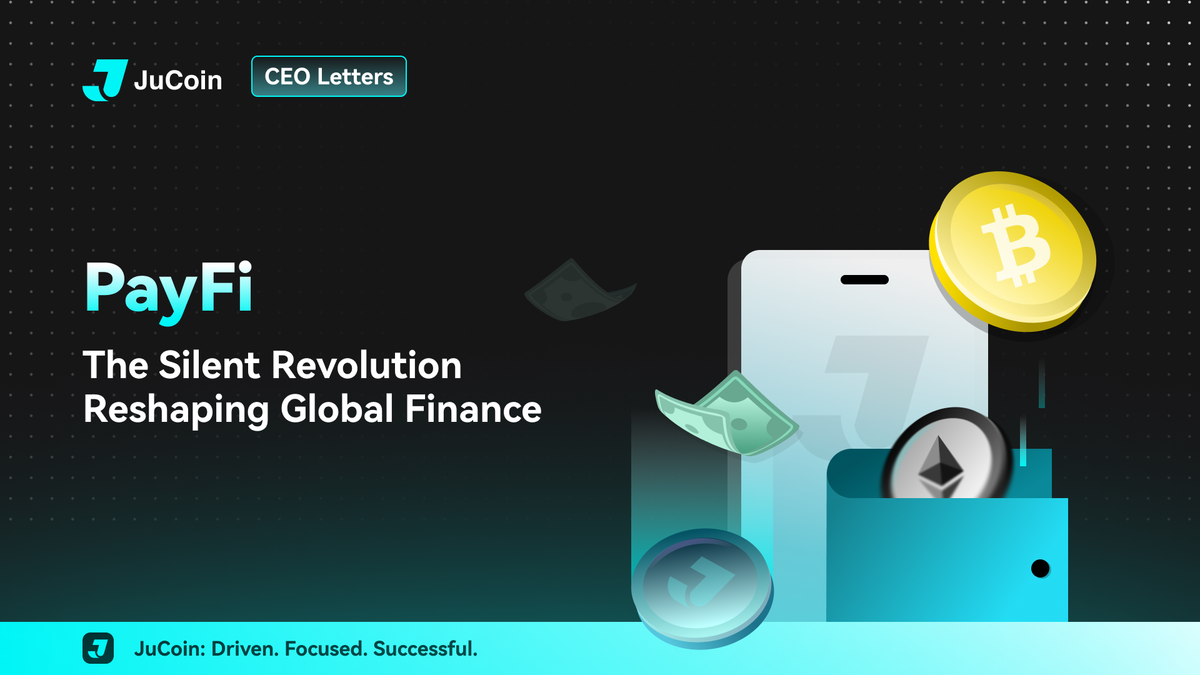PayFi: The Silent Revolution Reshaping Global Finance

During my years at China Telecom, I witnessed firsthand how payment friction could strangle business growth. A simple invoice delay meant contractors waited months for payment while we sat on unused capital. Both sides suffered from a system that treated time as worthless when money was involved.
Today, Payment Finance (PayFi) promises to solve this trillion-dollar inefficiency by bringing the time value of money on-chain. While headlines focus on meme coins and trading volumes, PayFi quietly addresses one of capitalism’s oldest problems: the gap between earning value and accessing that value.
Understanding PayFi
PayFi represents the fusion of payment services with financial functions like lending and credit. Unlike traditional crypto payments that simply transfer value faster, PayFi unlocks money tied up in future cash flows. A freelancer can borrow against an upcoming invoice, receiving funds immediately instead of waiting 30+ days for payment. This transforms receivables into liquid assets.
The distinction from conventional DeFi lending is crucial. Most DeFi protocols require over-collateralization with crypto assets and operate entirely on-chain. PayFi bridges real-world payment flows with blockchain efficiency, often enabling under-collateralized loans backed by verifiable off-chain receivables.
A $124 Trillion Opportunity
The scale of opportunity becomes clear when examining global payment flows. Traditional card payment volume reached $42.7 trillion in 2022, projected to grow to $63.5 trillion by 2028. Global B2B payments alone totaled $89 trillion in 2023, forecast to reach $124 trillion by 2028.
Within this massive market, inefficiencies abound. Global remittances totaled $831 billion in 2022, with average fees of 6-7% and approximately $4 trillion trapped in pre-funding liquidity. These numbers represent real businesses and individuals losing substantial value to payment friction.
Digital payments reached $9.5 trillion globally in 2023, projected to exceed $14 trillion by 2027. Yet DeFi and Web3 payment volume remains below $100 billion. If PayFi captures just 10% of global digital payments by 2030, it would create a $1.8 trillion market or twenty times the size of today’s DeFi sector.
Stablecoins as the Infrastructure Layer
The foundation for PayFi’s growth lies in stablecoin adoption. Monthly stablecoin transaction volume grew from $1 trillion to $2.6 trillion in 2024, while market capitalization increased from $130 billion to $204 billion. This infrastructure enables the instant settlement and programmable money features that make PayFi possible.
Consider Visa’s pilot program using USDC on Solana for merchant settlement. Traditional payment networks now recognize that blockchain rails can reduce settlement times from days to seconds while maintaining regulatory compliance.
Leading Projects With Real Traction
The PayFi ecosystem has moved beyond theoretical potential to demonstrate measurable adoption:
Huma Finance has emerged as the sector’s leader, processing over $4.3 billion in on-chain invoice and payroll financing. With $100+ million in active liquidity and $136 million monthly in financed payments, Huma’s expansion to Solana and listings on centralized exchanges signal institutional recognition. Most impressively, they’ve maintained zero defaults across billions in transaction volume.
Mountain Protocol created USDM, a yield-bearing stablecoin backed by U.S. Treasuries with $39 million in supply and 12,000+ holders processing $50-60 million monthly transfer volume. Anchorage Digital’s acquisition of Mountain Protocol in 2025 demonstrates how traditional finance views PayFi as strategic infrastructure.
The Solana ecosystem has become PayFi’s proving ground. Solana Pay enables fee-minimal merchant payments with Shopify integration, while Isle Finance focuses on B2B supply chain financing. Jupiter‘s Huma integrations serve 400,000+ monthly active users, proving that PayFi can achieve meaningful scale.
The CEX Advantage: JuPay as Blueprint
Centralized exchanges play a critical role in PayFi adoption by serving as bridges between traditional finance and blockchain innovation. At JuCoin, our JuPay feature demonstrates this integration by enabling crypto-to-CNY conversions via Alipay within minutes.
CEXs provide essential infrastructure that standalone PayFi protocols struggle to match:
Regulatory Compliance: KYC/AML frameworks and legal oversight create the trust foundation necessary for corporate and institutional adoption.
User Experience: CEXs can abstract blockchain complexity while offering custodial security that guarantees user funds. This is crucial for businesses uncomfortable managing private keys.
On/Off Ramps: Easy fiat conversion lowers barriers for traditional businesses entering PayFi ecosystems.
Product Integration: CEXs can bundle payments, lending, and rewards under unified interfaces, driving mainstream adoption through familiar user experiences.
JuPay’s competitive conversion fee and near-instant payout target the 300+ million global crypto users ready for seamless payment solutions. This positions exchanges as Web3 payment banks, offering bundled services with Web2-level user experience.
Overcoming Implementation Barriers
Despite promise, PayFi faces significant adoption challenges:
Regulatory Uncertainty: Unclear laws around cross-border payments, stablecoin status, and lending regulations create compliance risks. Successful projects focus on compliant markets and restrict services to KYC-verified users.
User Experience Complexity: Wallets, private keys, and network switching intimidate mainstream users. Solutions include embedded wallets, Web2 platform integration (Shopify, Alipay), and mobile-first design on fast, cheap networks like Solana.
Trust and Risk Management: Real-world collateral requires verification systems, and smart contracts need transparency and insurance funds. Huma’s zero-default track record across $3+ billion in volume demonstrates that proper risk management makes PayFi viable.
Liquidity Bootstrapping: PayFi needs both borrowers and lenders. Initial incentives help, but sustainable growth depends on solving genuine business problems.
Strategic Implications for JuCoin
PayFi addresses cash flow friction that affects everyone from individual creators to multinational corporations.
At JuCoin, we view PayFi as infrastructure for the service-driven ecosystem we’re building. Our comprehensive platform spanning exchange services, JuChain blockchain, JuChat social features, and JuOne hardware creates natural integration points for PayFi solutions.
Consider the possibilities: A creator using JuChat could instantly monetize future fan engagement through PayFi loans. A game developer on JuChain could finance development costs against projected player revenue. A JuOne user could access credit based on their verified on-chain transaction history.
These logical extensions of infrastructure we’re already building.
The Convergence To Come
The most significant trend I observe is PayFi’s convergence with traditional finance. As banks and fintechs adopt PayFi rails behind the scenes, the distinction between “crypto payments” and “payments” will disappear. PayFi may fade as a distinct category while its mechanisms become embedded throughout financial infrastructure.
This mirrors what happened with internet technology. We stopped calling things “e-commerce” when online shopping became simply “commerce.” PayFi’s ultimate success will be measured by its invisibility.
Programmable money enables entirely new models: streaming payments, pay-as-you-go subscriptions, instant cross-border settlement. These capabilities can reshape everything from payroll to trade finance, creating value through efficiency rather than speculation.
The Time Value Revolution
PayFi represents blockchain technology’s most practical application to date. By bringing the time value of money on-chain, it addresses inefficiencies that have plagued commerce for centuries. The $124 trillion global payment market provides vast room for improvement.
The projects gaining traction today show that PayFi delivers measurable value. As regulatory frameworks clarify and user experience improves, adoption will accelerate.
At JuCoin, we’re building infrastructure for this future. PayFi aligns perfectly with our service-driven philosophy: technology should remove friction, not create it. When payments become programmable and instant, creators and businesses can focus on what they do best instead of managing cash flow.
The silent revolution in finance has begun. Those who recognize PayFi’s potential today will shape the payment systems of tomorrow.
Explore More From JuCoin:





